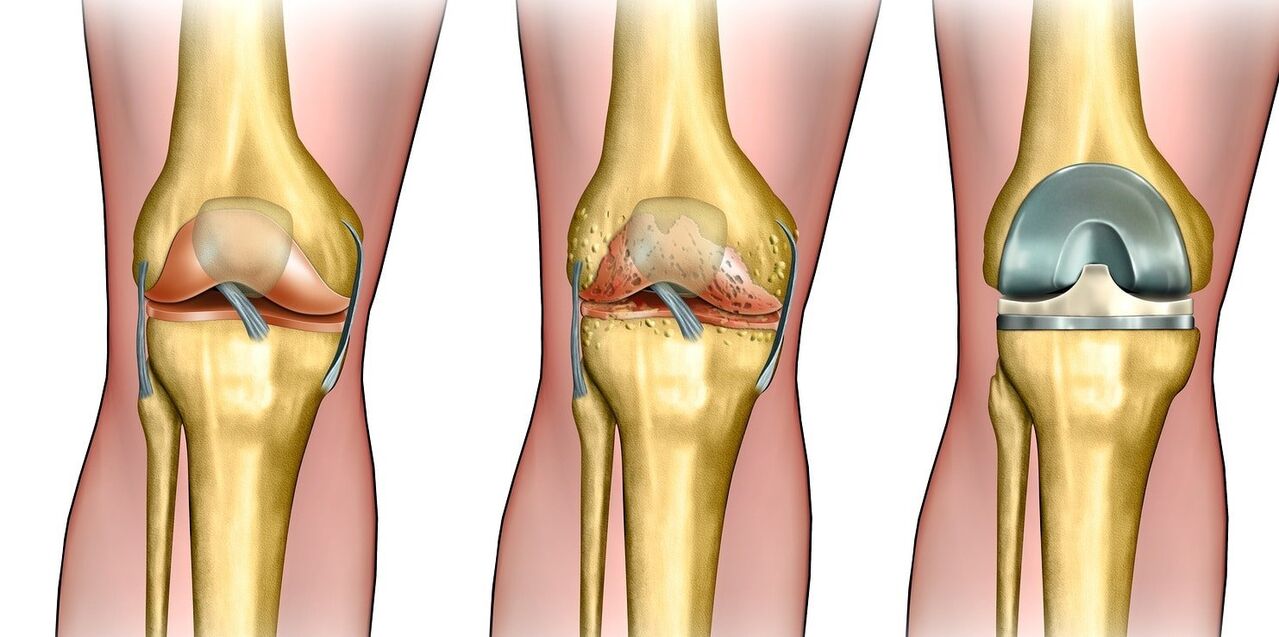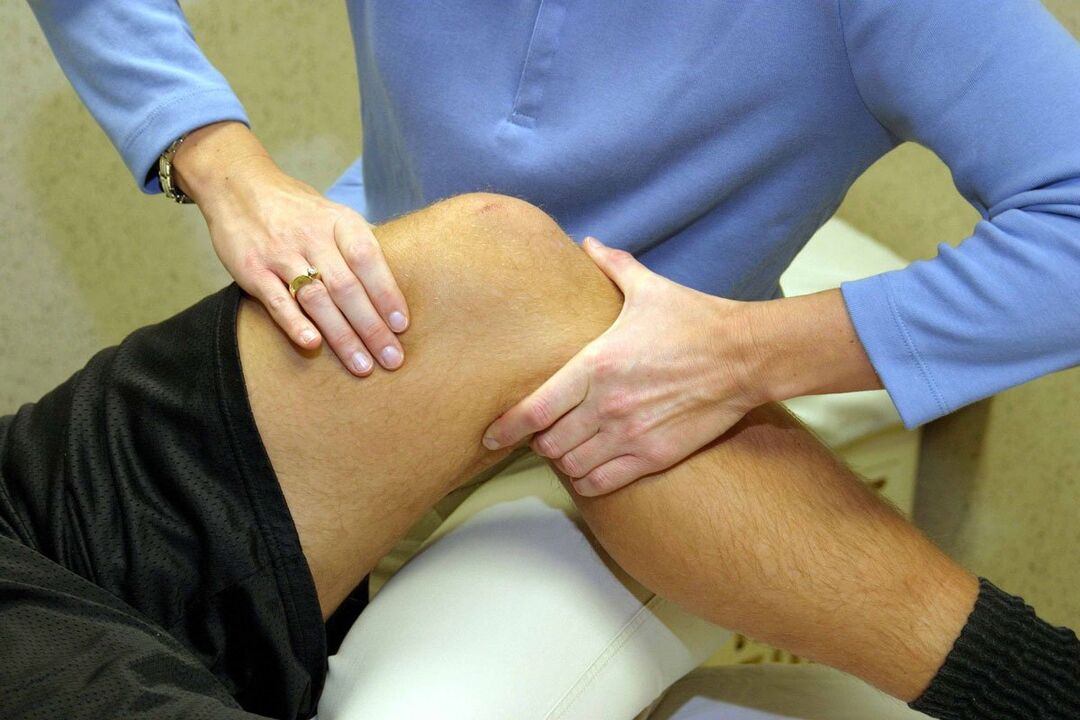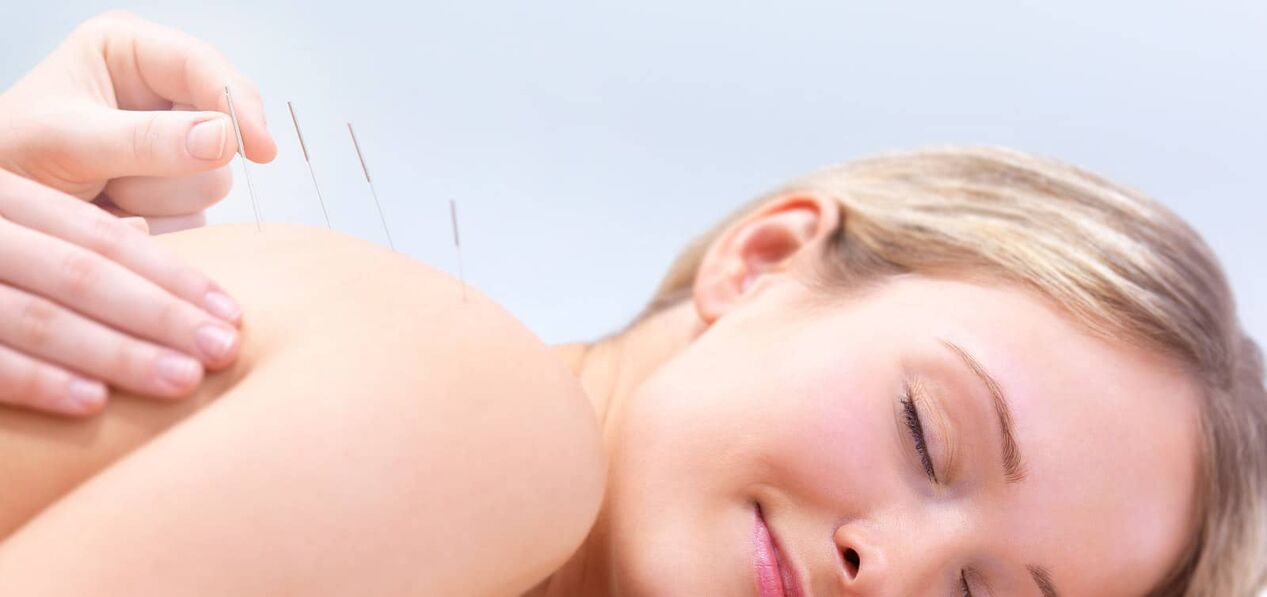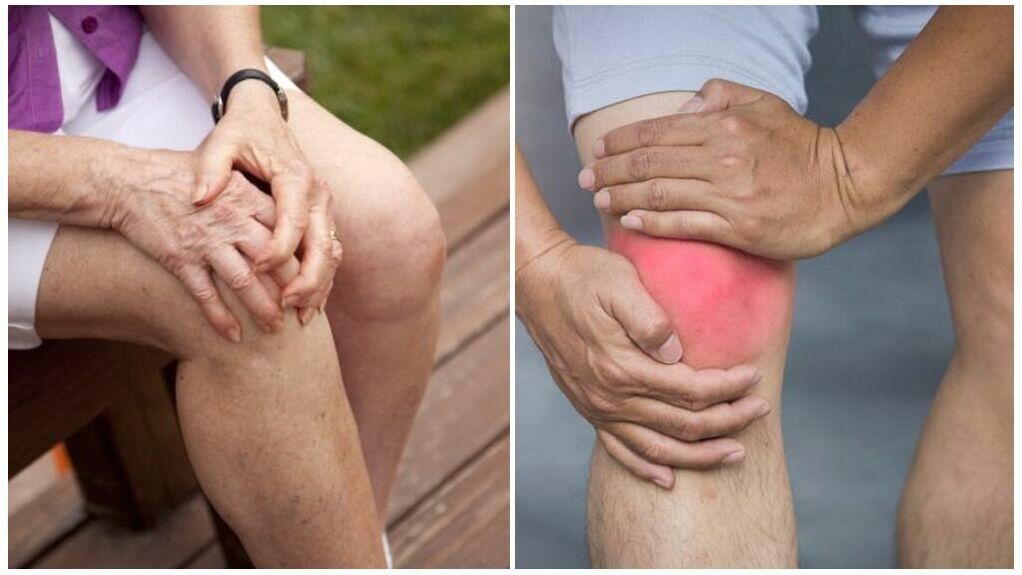Arthrosis is a disease whose symptoms need to know.This dangerous and very common pathology at an early stage can be almost invisible, but the progressive, capable of causing intolerable pain and even leads to damage.We will talk about how to avoid this in our article.

Why is arthrosis occurring and when should you proceed with its treatment
Joint pain "clicks" when moving and reducing the mobility of the limbs often go unnoticed: most people do not attach significance to such signals to the body.In the meantime, these symptoms can indicate a serious illness - arthrosis.
Deformation of arthrosis is a disease that consists in the destruction and thinning of joint cartilage tissue.At the same time, the joint tissue becomes more loose and grows, leading to the appearance of bone processes and inflammation inside the joint.
At an early stage, patients experience mild discomfort in movements that may not pay attention.In the second stage of the disease, severe pain occurs, leading to a limitation of joint mobility.The third stage, in addition to the pain, is accompanied by complete or almost complete destruction of the joint cartilage tissue.
Significant slowdown in the development of arthrosis, help maintain limb mobility and avoid serious surgery with timely therapy - so it is so important to consult a rheumatologist at the first symptoms.
Arthrosis
From the point of view of European medicine, the treatment of such a serious illness as arthrosis requires an integrated approach, taking into account the symptoms of different stages of the disease.In the complex of therapeutic measures, in addition to taking medicines, they include measures to reduce weight, kinotherapy, physiotherapy and, if necessary, are prescribed surgery.The treatment program is made up of a heraldologist, taking into account the localization of the disease, the characteristics of the patient's body, but necessarily involves a whole set of actions aimed at combating the disease.

Medication
The first task that occurs in the treatment of arthrosis is the elimination of pain and inflammation in the joint.For this, non -steroidal anti -inflammatory drugs (NSAIDs) are prescribed, such as ibuprofen, ketorolac, piroxicam, diclofenac and their derivatives in the form of tablets, injections, gels, ointments or rectal candles.Remember that the use of this group of medicines only relieves the main symptoms of the disease.Moreover, long -term adoption of NSAIDs is able to speed up the process of cartilage destruction, so you need to use them with great care and only as prescribed by the doctor.
The use of analgesics is another way to save the patient from pain.Unlike the NSAIDs, analgesics to a lower degree relieve inflammatory processes, but more effective in the fight against pain.In the case of muscle spasms, antispasmodics such as midokalm are prescribed.Both drugs are most often used in the form of injections to relieve the symptoms of arthrosis and they are ineffective to combat the disease itself.
Chondroprotectors are one of the most important components of arthrosis drugs: they saturate cartilage tissues with nutrients, stimulating cell growth.The chondroprotectors group belongs to, for example, glucosamine produced in the form of tablets or capsules.You should not expect a quick effect of using chondroprotectors: Improving the cartilage condition can only be seen after prolonged administration of medicines.In addition, they will not help if the disease has reached the third, the sehest stage.
Vasodilator drugs are used to improve blood flow, as well as to eliminate the spasm of small vessels.Taking such medicines in combination with chondroprotectors enhances the effect of the latter: nutrients enter cartilage tissue in a larger volume.
Physiotherapy
- Shock wool therapy.The use of shock wave therapy (UVT) with arthrosis allows you to eliminate one of the main causes of pain: bone processes similar to spikes.Under the influence of ultrasound waves, the "spikes" soften and solve over time, the effectiveness of blood flow and metabolic processes improves.For all advantages, shock wave therapy is effective only in the early stages of arthrosis and has many contraindications, therefore it is prescribed with caution.
- Automated electromiostimulation with verticalization.The use of electrical impulses to contract muscle is recommended primarily for patients with the bed, as well as in the presence of severe injuries when the necessary exercise is contraindicated.Although electromyostimulation is not the most common goal for arthrosis, its use helps to increase muscle tone and improve blood circulation, which has a positive effect on the dynamics of recovery.
- Ultraphonophoresis.This procedure combines two types of exposure at a time - ultrasonic waves and medicines.As a result, phonophoresis allows you to significantly increase the effect of medicines: thanks to the ultrasound of their substances, they are delivered to the "target" cells and are absorbed by those that are much more active.
- Ozone therapy.The introduction of a gas mixture into the joint capsule reduces pain and inflammation, helps to restore joint mobility, improves blood circulation.As a rule, ozone therapy is prescribed by a course of several injections depending on the severity of the disease.
Methods of traditional Chinese medicine

In Chinese medicine, the restoration of joint health begins with diagnosis, during which the general condition of the body is evaluated and the root cause of arthrosis is revealed.The doctor then prepares a program to influence biologically active points.Complete treatment of arthrosis includes the following TCM methods:
- Acupuncture (acupuncture) - placing the best needles of points in a particular combination;
- Phytocompress - "squeezing" from medicinal herbs;
- Moksotherapy - heated by cigars;
- Tuyna Acupressure.
At the same time, acupuncture is focused on acupuncture as the most effective method of treatment in traditional Chinese medicine.The results of therapy depend to a large extent on the qualification of a specialist.When in the hands of a qualified physician, the patient will soon be able to note an improvement in well -being accompanied by pain removal, restoration of joint mobility, strengthening immunity, normalization of blood circulation and metabolism [2].
Other methods of non -surgical treatment of arthrosis:
- Medical physical education.LFK for arthrosis is considered a great way to improve blood circulation in the area of the affected joint as well as to strengthen the muscles.As a rule, the doctor recommends starting with simple exercises, gradually increasing the number of repetitions.
- Menotherapy.Media physical education can be supplemented with mechanotherapy - exercises using special simulators.Devices allow you to increase the load during gymnastics (due to various weighing agents) while protecting the patient from damage.Like exercise therapy, mechanotherapy helps to improve blood circulation, increase muscle tone.
- Joint traffic.The essence of the procedure is the mechanical "pulling" of the joint on a special apparatus for 15-20 minutes.This allows you to reduce the load on the joint, slow down the development of arthrosis and significantly reduce the pain in the patient.The course, consisting of 10-12 sessions, takes about six months to improve and consolidate the result.
- Lymphatic drainage and massage for warming.These procedures contribute to heating the diseased area, eliminating spasm and pain, improving blood circulation in the joints.Lymphatic drainage and warming massage can also be used with limited mobility of the patient.
- The purpose of dietary nutrition.Weight correction is one way to significantly reduce the joint load and slow down the development of arthrosis.Of course, maintaining a diet in itself does not contribute to recovery, but in combination with other procedures, it can have a certain effect.
- Lifestyle correction.In order to fight arthrosis, the patient will need to significantly review the usual life and start wearing only comfortable shoes, use only comfortable furniture, while women will have to abandon high heels.It is also advisable to get rid of bad habits and exclude excessive physical activity.In some cases, wearing orthosis, a regular visit to the pool and the bath will benefit.A comprehensive list of recommendations may be obtained by the attending physician, which will be based on the patient's condition.
Surgical treatment
- Puncture (minimum invasive intervention).It is also used to diagnose the disease.The needle is inserted into the joint capsule by participating in the fluid - this allows you to get material for analysis, reduce the load of the capsule and, if necessary, also administer corticosteroid drugs directly in the focus of inflammation.
- Arthroscopy is diagnostic.Arthroscopy is the introduction of a special apparatus of an arthroscope through microwaves into the skin.This allows you to carefully examine the joint as well as to remove the separated fragments of cartilage, eliminating the causes of the inflammatory process and pain.
- Osteotomy is the angle.The essence of this surgical procedure is to give the patient's bones with their subsequent fixation from a different angle.The surgery allows you to reduce the load on the joint and remove the pain for a long period.Such a radical effect is rarely prescribed - the load on the patient's body is too high and the rehabilitation period is too long.
- Endoprothetics.In cases where other types of treatment have not helped and the disease completely or almost completely destroy the joints, they are replaced by dentures of plastic, metal or ceramics.Endoprotetic is a difficult and expensive surgery that requires prolonged rehabilitation.Many patients for several months after surgery to pain pain.However, the patient's endoprothetics is often the only alternative to the prospect of being immobilized.The official life of modern dentures has reached twenty years and all these years the patient will be able to live a full life.
Symptoms and characteristics of the treatment of arthrosis of different types

Despite the general characteristics of the symptoms, arthrosis of different joints has its own signs and characteristics of treatment.For example, the use of ointments for hip arthrosis is ineffective due to muscle and adipose tissue, which prevents the drug from entering the site of inflammation.But the same ointments are shown well when applied to the knee or elbow joint.Let's look at what symptoms are characteristic of arthrosis of the joints (ankle, knee, elbow, shoulder, fingers and hips) and what treatment is appropriate for any case.
- Treatment of arthrosis of the joints of the brush (fingers).At an early stage, the disease is released only with a small crunch and mild pain with the movements of the hands, but in the absence of treatment it becomes visually noticeable: there is a noticeable thickening on the phalanx in the joints.The pain increases and becomes constant, there is a burning sensation and pulsation in the fingers.NSAIDs and corticosteroids are used to relieve pain and inflammation to slow the destruction of cartilage - massage, chondroprotectors and fingers.
- Treatment of arthrosis of the shoulder joint.Painful muscle cramps, reducing the mobility of the hands, "shots" when lifting and leaving the sides - all these are the symptoms of arthrosis of the shoulder joint.Assist massage, physiotherapy exercises in combination with the help of antispasmodics and intra -school injections of painkillers.
- Treatment of arthrosis of the elbow joint.The symptoms of the elbow joint are a severe crunch when bending the hands in the elbows and when moving with tassels "shooting" pain and weakness in the muscles.To get rid of this type of arthrosis, physiotherapy procedures, compresses and non -steroidal anti -inflammatory drugs in the form of ointments are used.
- Treatment of arthrosis of the hip joint.TBS arthrosis is characterized by "soft" joints for cutting, painful or uncomfortable sensations in the lower back during movement or intense fatigue.In the treatment of the disease, painkillers are prescribed in the form of injections, capsules or tablets, compresses with anti -inflammatory solutions.
- Treatment of arthrosis of the knee joint.With gonarthrosis, patients complain of crispy sounds during movements, ICR pain, especially with heavy loads and increases the size of the joint.Complex therapy includes: shock wave therapy, joint traffic, physiotherapy exercises, the use of non -steroidal anti -inflammatory drugs (ointments), and the use of compresses.
- Treatment of ankle arthrosis.The feeling of tingling, redness, crunching, clicks in the foot, fatigue when walking - these symptoms indicate the development of arthrosis of the ankle.In the treatment of this type of disease, physiotherapy, massage and therapeutic baths are effective.The ankle load should also be reduced.
To avoid arthrosis, especially in the presence of predisposition, you should adhere to simple rules: to wear comfortable shoes, maintain physical activity, while monitoring the measure during loads, avoid injuries and hypothermia.To prevent the disease, it is especially important to maintain normal weight, as each extra kilogram increases the load on the joints.


















